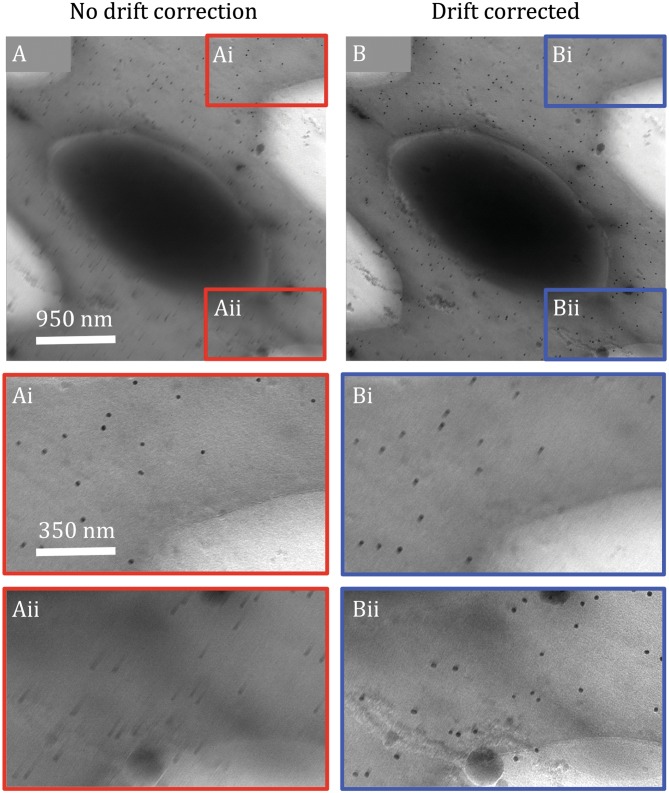Fig. 6.
Incomplete, local unblurring of cryoET images by whole-frame motion correction. Image of a mouse platelet at 57° tilt without (A) and with (B) motion correction applied to 21 frames collected with a K2 DDD on a JEM3200FSC microscope. Blurring is anisotropic both before (Ai and Aii) and after (Bi and Bii) whole-frame motion correction. While motion correction by iterative frame alignment (Galaz-Montoya et al. 2016b) improves the overall image (B), the extent of improvement varies in different parts of the image (Bii). Unexpectedly, a region that was not originally blurry (Ai) becomes blurry after motion correction (Bi) while a different region is effectively unblurred (Aii versus Bii). This suggests that different parts of the specimen are subject to divergent apparent motions, possibly due to charging effects and/or motion perpendicular to the imaging plane, and therefore local motion correction methods are needed for cryoET images, similar to those applied per particle in SPA cryoEM

